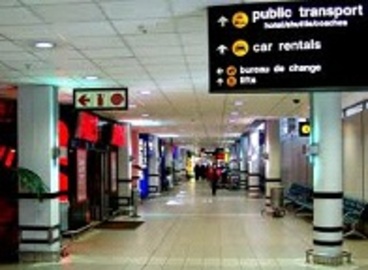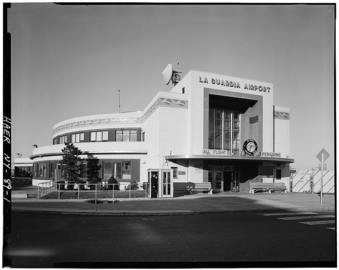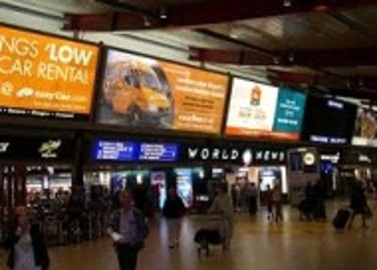Introduction

London Luton Airport is the fifth largest passenger airport in the UK. This airport has over 500 employees, and about 8,000 indirect contracts. It's one of the main economic drivers of the regional economy. In pioneering public-private agreement signed in August 1998, Luton Airport remains publicly owned by Luton Borough Council but is managed and developed by a private consortium, London Luton Airport Operations Ltd, for a period of 30 years.
History

Luton airport was opened on July 16, 1938, under the name of Luton Council for the Right Honourable Kingsley Wood, Secretary of State for Air. Then the airport was acquired by the Borough of Luton and already in the early days of his birth was considered that Luton should be appointed to the North Terminal London.
During the war years, the airport continued to operate as a commercial airfield, but was also the basis for Fighter Squadron 264. He was an important center of production too, in which the Percival Aircraft Company created a series of aircraft for civil and military - including the famous fighter bomber Mosquito, 'The Wooden Wonder'- which was built under license from the aircraft of Havilland Company.
The civilian airport development continued after the war and 1952 opened a new control tower. The decades of the 50 and 60 sat their final nature. In those years, it saw the birth of affordable holidays that combine transport and accommodation in one 'package'. The 'package holiday' enabled many people to travel abroad for the first time and laid the foundations of the great market success of inclusive tour holidays.
Features

A key event in the growth of charter traffic at Luton took place in 1962 with the formation of a new charter airline called Euravia. Late 1964, Euravia changed its name to Britannia Airways and to Thomson Airways in 2004, one of the world's largest airlines based at the airport.
In late 1995, Luton helped develop the concept of 'low cost', to become the first UK-based easyJet. The gradual introduction of new routes for easyJet, in particular, saw passenger numbers increased from 1.9 million in 1996 to 3.4 million passengers in 1998.
To satisfy the growing demand, in September 2004 launched the largest civil engineering project carried out at the airport since the construction of New Terminal Building in 1999. On July 1, 2005, London Luton Airport opened the new £ 35 million for the Passenger Terminal Development. This included the departure lounge 7400m2 and retail complex- catering, a 6-Gate, Pier that's 200 meters long and shipping partners in Security, Immigration and Customs Chambers.
Luton airport currently supports the following traditional airlines: easyJet, Ryanair, Wizz Air, Monarch Scheduled, Aer Arann, flybe, El Al and Air Blue, while Thomson and Monarch account for the remaining 8% yield charter traffic . The airport now offers passengers a wide range of services, including departures to over 90 destinations in Europe, Africa and Middle East.
Tips and Comments
Luton is 32 miles from Central London and 30 from North London. Although there are numerous transportation options (bus, taxi, rental car etc.), the train is the best for London.
The service runs every ten minutes between 05:00 and midnight and also connects with all trains calling at Luton Airport Parkway overnight with hourly shuttle service.
Rail passengers will be able to buy through tickets to London Luton Airport. Passengers arriving at Luton Airport Parkway station without a ticket through the airport and wish to use the bus service will pay an excess charge of £ 1.50 each way if they get to the train station.